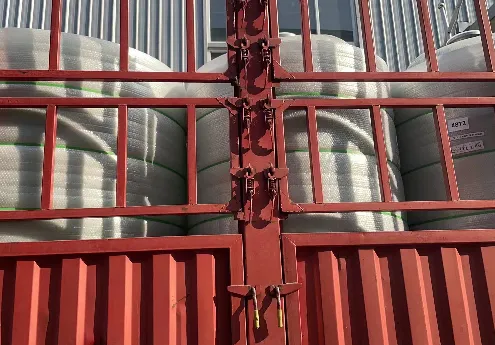loading...
- No. 9, Xingyuan South Street, Dongwaihuan Road, Zaoqiang County, Hengshui, Hebei, China
- admin@zjcomposites.com
- +86 15097380338
- Welcome to visit our website!
Advantages of Fiber Reinforced Plastic Tanks for Storage and Industrial Applications
Fiber Reinforced Plastic Tanks An Overview of Benefits and Applications
Fiber reinforced plastic (FRP) has emerged as a revolutionary material in various industries, particularly in the construction of tanks for storage purposes. FRP tanks offer numerous advantages over traditional materials such as steel and concrete. This article will explore the composition, benefits, applications, and future prospects of fiber reinforced plastic tanks.
What is Fiber Reinforced Plastic?
Fiber reinforced plastic is a composite material made by combining a polymer matrix with reinforcing fibers, such as glass, carbon, or aramid fibers. This unique composition endows FRP with exceptional strength, stiffness, and durability while maintaining a lightweight profile. The combination of these attributes makes FRP an excellent choice for various structural applications, especially in tank manufacturing.
Key Benefits of FRP Tanks
1. Corrosion Resistance One of the most significant advantages of FRP tanks is their resistance to corrosion. Unlike metal tanks that succumb to rust and other chemical reactions, FRP materials can withstand harsh environments, making them ideal for storing chemicals, wastewater, and other aggressive media.
2. Lightweight and High Strength FRP tanks are considerably lighter than their concrete or steel counterparts. This reduces transportation and installation costs and makes them easier to handle onsite. The high strength-to-weight ratio means that FRP tanks can achieve similar load-bearing capacities with reduced structural support.
3. Longevity The durability of FRP tanks contributes to their long lifespan. With proper maintenance, these tanks can last for decades, reducing the need for frequent replacements and providing cost savings over time.
4. Thermal Insulation FRP has better thermal insulation properties than metal or concrete. This insulation helps in maintaining the temperature of the stored substances, which is particularly beneficial in industries where temperature control is crucial.
5. Design Flexibility The molding capabilities of FRP allow for customized designs tailored to specific applications and requirements. This design versatility is an invaluable asset across various industries.
6. Environmental Impact With increasing attention on sustainability, FRP tanks are viewed as a more environmentally friendly option compared to traditional materials. Additionally, their resistance to leaking minimizes the risk of soil and water contamination.
Applications of Fiber Reinforced Plastic Tanks
fibre reinforced plastic tanks

FRP tanks find applications in several sectors, including
1. Chemical Industry They are extensively used to store corrosive chemicals, acids, and alkalis due to their superior chemical resistance.
2. Water and Wastewater Treatment FRP tanks are ideal for storage and treatment processes in water treatment plants because of their resistance to microbial growth and corrosion.
3. Oil and Gas Industry These tanks are employed for the storage of oil, chemicals, and other hydrocarbons, benefiting from their lightweight and safety attributes.
4. Agriculture Farmers utilize FRP tanks for the storage of fertilizers and pesticides, taking advantage of their durability and reliability.
5. Food and Beverage The food industry employs FRP for process tanks, storage tanks, and transport tanks, ensuring compliance with health and safety regulations.
Challenges and Future Prospects
Despite the numerous advantages, FRP tanks face challenges, such as initial cost and the need for skilled labor for installation and maintenance. Additionally, the recycling of FRP materials has started to gain attention as environmental concerns grow. Research and innovation in recycling technologies promise a more sustainable life cycle for these tanks.
Looking ahead, it is anticipated that the demand for fiber reinforced plastic tanks will continue to rise across various industries due to ongoing advancements in composite materials and manufacturing processes. As industries seek sustainable and efficient solutions, FRP technology will likely evolve, integrating smart technologies and enhancing performance.
Conclusion
In summary, fiber reinforced plastic tanks represent a significant advancement in storage technology, characterized by their lightweight, corrosion resistance, and design flexibility. Their growing application across multiple industries embodies a shift towards more sustainable materials that meet the rigorous demands of today’s industrial landscape. The future of FRP tanks appears promising as innovations emerge, solidifying their role as a key player in safe and efficient storage solutions.
-
Why Choose a Galvanized Water Tank for Your Storage NeedsNewsMay.21,2025
-
The Strength and Durability of FRP GratingNewsMay.21,2025
-
The Importance of Water Treatment Systems for Clean and Safe WaterNewsMay.21,2025
-
The Advantages of FRP Rebar for Construction ProjectsNewsMay.21,2025
-
Say Goodbye to Hard Water with a Reliable Water SoftenerNewsMay.21,2025
-
Maximize Your Water Storage with a Sectional Water TankNewsMay.21,2025
-
The Power of Filter VesselsNewsMay.19,2025
